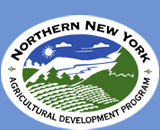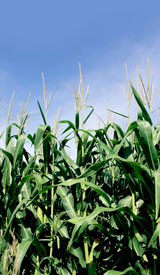February 29, 2008
Contact: Joe Lawrence, 315-376-5270; Mike Hunter, 315-788-8450
Note: Meeting sites: West Chazy, Malone, Canton, Lowville & Watertown
Learn about Nutrient Management Best Practices for Northern NY March
17-21
Where to put manure nutrients to best use? With the cost of fertilizer
climbing, can I make better use of manure nutrients, buy less
fertilizer, and still have good crops? At Making the Most of Your
Fertilizer Dollar meetings March 17 through 21 in West Chazy, Malone,
Canton, Lowville, and Watertown, Dr. Quirine M. Ketterings of Cornell
University and Cornell Cooperative Extension educators will share the
results of the latest nutrient management best practices research.
Ketterings has conducted much of her nutrient management research on
Northern New York farms. Ketterings and Cornell Cooperative Extension of
Lewis County Field Crops Educator Joe Lawrence will share the results of
nitrogen for corn research at the meetings.
Nutrient Management Increasingly Mandated
Increasingly, legislated mandates require the development of nutrient
management plans that specify how nutrients such as phosphorus,
nitrogen, and potassium will be applied to farm fields. One goal of such
mandates is to have fertilizer or manure applications meet and not
exceed crop nutrient needs. Corn, soybean, alfalfa and grass crops are
used to feed dairy and beef cows, small livestock, and people and to
sell as commodities and for biofuel production.
Ketterings, an associate professor of crop and soil sciences and team
leader for the Cornell Nutrient Management Spear Program at Cornell,
says, �Good nutrient management practices can results in good crop
yields and reduced runoff, volatilization and leaching losses. Our most
recent fieldwork shows we can save money, time, and labor by assessing
fields and rotations for nutrient needs and making use of nutrients,
such as manure, that are already on the farm.�
Ketterings cautions, however, �It is not a good practice to lower
fertilizer applications to all fields in response to high fertilizer
prices. Some fields need the extra fertilizer. It is more effectively to
identify which fields need the extra nutrients and reduce applications
only on fields that do not need the extra nitrogen (N), phosphorus (P)
or potassium (K).�
Dr. Ketterings and her collaborators, working with regional farmers,
have developed planning tools and fact sheets that help farmers make
nutrient management decisions that take into account soil types, soil
test results, crop rotations, fertilizer and/or manure use efficiency
based on application rate, application timing and methods, soil
drainage, and field location in relationship water sources.
Recent Research Shows Cost Savings Possible, Need to Field Test
Ketterings says, �Recent projects funded by the Northern New York
Agricultural Development Program have shown that reducing or eliminating
phosphorus use on on high or very high P fields can save as much as
$15-25 per acre, and eliminating all but a small starter fertilizer of
nitrogen on first-year corn fields crops can save $30 or more per acre.�
A new soil organic N test could help identify second or higher-year corn
fields with sufficient soil organic nitrogen for optimum yield, possibly
resulting in savings of $65 per acre or more.
The trick is to find out when you need the extra N and when not,� she
adds.
Northern New York Agricultural Development Program (NNYADP) Co-Chair Jon
Greenwood says, �Our goal with the grants program of the Northern New
York Agricultural Development Program is to fund on-farm research that
provides agricultural producers across the region with cutting edge
insights and practical results for on-target decision making for farm
productivity and profitability.�
NNYADP Co-Chair Joe Giroux says, �With fertilizer, seed and other input
costs rising, the value of recent NNYADP-funded research conducted in
Northern New York that shows farmers how to more efficiently use their
existing resources also rises. I encourage farmers to take advantage of
learning opportunities through these fertilizer meetings and by
participating in on-farm research projects.�
Field Crops Educator Joe Lawrence with Cornell Cooperative Extension of
Lewis County is a former graduate student of Ketterings in the Nutrient
Management Spear Program at Cornell. Lawrence says, �The Making the Most
of Your Fertilizer Dollars program responds to farmers� need to know as
much as they can about efficiently using nutrients. With Dr. Ketterings,
Ev Thomas of the Miner Institute and Baker Farm Manager Mike Davis, our
speakers provide field-tested knowledge that applies directly to
Northern New York conditions.�
Speakers at the fertilizer-focused meetings also include Everett Thomas
is Director of Agricultural Operations at the William H. Miner
Agricultural Institute in Chazy, NY. Thomas will present at the March 17
and 18 fertilizer meetings. Cornell University E.V. Baker Agricultural
Research Farm Manager Michael Davis will speak March 17. Ketterings will
speak March 17 in West Chazy, March 18 in Malone, March 20 in Lowville,
and March 21 in Watertown; Joe Lawrence will cover the N for corn
material March 19 in Canton. Cornell Cooperative Extension educators
Lawrence, Mike Hunter, Peter Barney (CCE retired), Carl Tillinghast, and
Blake Putman are also presenting.
For more information, contact Cornell Cooperative Extension. CCA credits
may be possible. To learn more about nutrient management research
conducted in Northern New York and for fact sheets, visit the website at
www.nnyagdev.org. # # #



